Strategies considered to cope with oil shifts
Vietnam, a net importer of energy since 2015, saw an annual increase in imports of 30.2 per cent for crude oil and 51.2 per cent for coal from 2016 to 2020. The current fluctuations and high crude oil prices are expected to continue to put pressure on domestic prices.
 |
| Dozens of experts and organisation representatives were present at the roundtable organised by VIR last week in Hanoi. Photo: Chi Cuong |
“With the current situation, the support for the local logistics sector is not ambitious enough,” said Le Quang Trung, deputy general director of Vietnam Maritime Corporation (VIMC) and vice president of the Vietnam Logistics Business Association. Trung was attending a roundtable themed ‘Oil Price Outlook and Sharing Experiences for Sustainable Development’, held by Vietnam Investment Review last week in Hanoi.
One of Trung’s latest ideas was to save fuel through the development of multimodal transport to reduce costs. “Part of this solution is the commissioning of new generations of eco-ships,” Trung said. “This would involve investing in a fleet of Vietnamese ships, but it remains unclear where the investment capital should come from.”
With the current situation, the proposed solution by the association would only solve VIMC’s difficulties but not those of non-maritime businesses. In 2021, logistics costs in Vietnam accounted for about 16.8 per cent of the value of goods.
Phan Duc Hieu, standing member of the National Assembly Economic Committee, said, “The government should focus on two major tasks. Firstly, support should be large but targeted, while curbing demand of and promoting fuel economy. This option will save more money.”
However, according to the International Monetary Fund, incentives for electricity prices and cash grants to the poorest 40 per cent of the population would be cheaper than current policies, which mostly cut fuel taxes or cap retail prices.
The second solution that Hieu suggested would be an energy shift towards a more efficient, greener economy. “The difficulty is that businesses are not ready to move while fossil energy in the medium term still brings its benefits. The transformation needs to be approached holistically, starting from the energy supply for the domestic market,” Hieu argued.
Reduction considerations
This summer, the government has adjusted tax reductions for petroleum products twice to reduce impacts on the domestic market. From July 11 to the end of December, the environmental protection tax on gasoline is reduced to VND1,000 (4.34 US cents) per litre of gasoline and VND700 (3 US cents) per litre of oil. Since August 8, the import tax on unleaded and motor gasoline was also reduced from 20 to 10 per cent.
Dr. Luong Van Khoi, vice president of the National Centre for Socioeconomic Information and Forecast under the Ministry of Planning and Investment, said that it would be necessary to continue reducing taxes and fees on petrol as taxes in the petrol retail price structure currently include import tax, special consumption tax (except for oil), environmental protection, and VAT.
“Policymakers need to consider reducing VAT on gasoline until the end of this year, and at the same time reducing excise tax and import tax as many countries have applied,” Khoi said. “Reducing taxes on a percentage of gasoline price will make more sense than reducing fixed taxes like protecting the environment.”
The sharp increase in the world’s crude oil prices has a two-way effect on the revenue from the state budget and increased production and business costs of enterprises. In 2022, the total state budget revenue will decrease by about $1.46 billion due to the reduction of the environmental protection tax on gasoline, oil, and grease, according to the Ministry of Finance.
Expensive solutions
Although the domestic supply of gasoline was less stressful, the production capacity could only meet about 70 per cent of the demand for petroleum products. Both Nghi Son and Binh Son oil refineries are operating at maximum capacity, along with imported sources, to ensure the domestic petroleum supply.
It is expected that these two refineries produce 3.9 million cubic metres in Q3, accounting for 72 per cent of the total demand. In Q4, they are expected to produce 4.4 million cu.m, accounting for 80 per cent of the total demand, according to PetroVietnam’s data.
Hideaki Egashira, investment director of Idemitsu Kosan Co.,Ltd, one of four stakeholders of the Nghi Son refinery and petrochemical complex, said at the roundtable, “There are still many worries for Nghi Son’s financial resources. Ensuring cash flow for the refinery with a capacity of 10 million tonnes of crude oil a year is an important priority.”
Egashira added, “Earlier this year, there was a time when we didn’t have enough money to buy crude oil for production.”
At that time, the price of crude oil went from $60 to $90-120 per barrel, simultaneously raising the selling price of petroleum products from the refinery.
Nghi Son, which accounts for 35 per cent of the total domestic petroleum supply, at the beginning of the year cut its capacity from 105 to 80 per cent due to a lack of capital to buy crude oil. This immediately had a strong impact on domestic supply.
Egashira hopes to reach a consensus for a solution among the stakeholders involved at the Nghi Son project by the end of this year. “Investors at the project have different views. We are trying our best to solve this problem to ensure cash flow for raw materials, stable production, and sales,” he said.
If Nghi Son cannot guarantee output, Vietnam could invest in building a petrochemical complex and national crude oil reserve. Last month, state-run oil and gas group PetroVietnam reported an investment opportunity to the prime minister located in the southern province of Ba Ria-Vung Tau.
According to PetroVietnam, the new oil refining project complex is expected to be divided into two phases, with a total capacity of 24-26 million tonnes of crude oil per year, as well as a national reserve for about one million tonnes of crude oil and 500,000 cu.m for petroleum products. The total investment into this complex would circle around $18.5 billion.
World oil prices fluctuate and are difficult to predict. PetroVietnam warned that Vietnam will have a large shortage of petroleum products, estimated at 19.5 million tonnes in 2030 and about 25 million tonnes in 2035.
The country’s petroleum demand in 2020 was at 18 million tonnes, and is expected to increase to about 25 million tonnes by 2025 and 33 million tonnes by 2030.
The domestic supply of petroleum from Dung Quat and Nghi Son refineries and condensate processing plants is about 12.2 million tonnes, and is expected to increase to about 13.5 million tonnes after the expansion of Dung Quat.
Oil prices have fallen significantly due to concerns about the global economic slowdown and reduced demand in Europe, the United States, and China. The price of US crude oil WTI on September 8 fell 1.6 per cent to $85.44 a barrel, the lowest level since January 26. The Brent oil price also lost 1.3 per cent to $91.60.
| Le Tuan Anh Director general, Department of Industrial Economy, Ministry of Planning and Investment
Under the pressure of oil prices, the government has provided many policies and solutions to stabilise the macroeconomy and support businesses. The adjustment of domestic gasoline prices is closely following the movements of world prices, in combination with flexibly using the petroleum price stabilisation fund to minimise the increase in domestic prices. The government will also implement numerous solutions such as strengthening the management, inspection and supervision of petroleum business activities to stabilise the petroleum market without speculation and profiteering, and prevent the smuggling of petroleum in the border areas. We are building scenarios for GDP growth and inflation control, providing appropriate and flexible management solutions, including considering the room for further reductions in taxes and fees in petrol retail prices, VAT for petroleum products until the end of 2022, and special consumption tax on petrol as experienced by other countries. The government is promoting the use of liquefied natural gas that Vietnam has great potential, encouraging foreign investors in the oil and gas field to maintain and expand their projects, especially those with significant strategic significance for Vietnam in the East Sea, while boosting research on the exploitation of flammable ice in the East Sea. We are doing the utmost to perfect institutions, transforming energy structure, promoting investment in clean and renewable energy projects, focusing on green industry, and attracting more foreign investment in this field to gradually reduce the dependence on conventional oil and gas. | |
| Phan Duc Hieu Standing member, National Assembly Economic Committee
The energy transition should be approached holistically, starting from the supply. Difficulties mean that businesses are not ready to change, and don’t have enough investment for transformation. The use of fossil energy in the medium term, if it is still beneficial, should focus on improving quality and getting cleaner. If clean energy and alternative energy sources are ready, how will consumers switch? For example, when the price of diesel oil increases, we move to use renewable energy. However, businesses will likely have to spend more money on investment with lower profits for several years, so they have to think hard about investing or not, especially when there is a lot of volatility. Therefore, it is necessary to find solutions for all sides to promote the energy transition and diversify sources, and encourage the use of clean energy along with suitable support policies. The government can only help to support price stability for so long, and it is hard to forecast oil prices because of numerous unpredictable factors. So what we need to do is to respond to volatility. The government has taken measures to ensure the stability of fuel prices. Besides support on taxes and fees, it is necessary to ensure energy reserves, build warehouses of reserved energy, and improve domestic oil refining and petrochemical capacity. | |
| Kenya Maeda Senior executive officer for Integrated Supply, Trading Crude and Global Business, Idemitsu Kosan Co., Ltd.
I have never seen a period when people are more aware of the importance of energy than now. The trend of carbon emissions reduction in Europe has become a global trend. In Asia, China and Japan have launched national policies to achieve net-zero emissions by 2050. More than 130 countries and regions have announced carbon-cutting policies. In addition, as financial institutions tightened credit on fossil fuel-related loans due to the trend of reducing carbon emissions, investment in oil and gas increased very slowly. This is also one of the factors that led to the increase in oil prices. As the economy began to recover in 2021, the price of crude oil increased from $50 at the beginning of the year to $75 at the end of the year. In 2022, the market witnessed the possibility of Russia carrying out a special military operation against Ukraine. Along with rising oil prices, the price of food and necessities has also skyrocketed. The solution for the economy has become an urgent political issue for countries. The present time is also the period of energy transition towards the goal of reducing carbon emissions. There was a time when countries scrambled to reduce carbon emissions. However, in the context that Europe is increasingly feeling the energy crisis, countries are slowly regaining their composure and trying to respond from a more realistic perspective. | |
| Nguyen Hoai Nam Deputy general secretary, Vietnam Association of Seafood Exporters and Producers
It is expected that Vietnam’s aquatic export turnover will exceed $10 billion this year, up about 12-15 per cent compared to last year. The figure in the first eight months of 2022 is estimated to hit $7.5 billion, up 35.5 per cent on-year, thanks to the growing demand for Vietnamese aquatic products. However, the fisheries industry is facing massive difficulties, including a hike in transportation costs and fuel prices, which has burdened enterprises. High fuel prices have been putting pressure on ship owners. Each offshore fishing trip costs about over $13,000 for a ship. Each time the fuel price increases, the ship’s operational costs will escalate by 20-30 per cent on average as the ship needs fuel, ice to freeze fish, drinking water, foodstuffs, among others. The increase in fuel prices has also caused a 15-20 per cent rise in automobile transport costs domestically. Such costs are increased even more strongly for goods transported by sea. For example, the transportation cost increased from $4,000 to $18,000 per 40-feet container to the US in the first months of this year before falling to $16,400 in June. This has negatively impacted domestic exporters, who are also suffering from big rises in many other input costs such as packing and chemicals. | |
| Nguyen Van Phung Former director, Department of Tax Administration at Large Enterprises, General Department of Taxation
For every US dollar of oil price increase, we got $43.5 million in taxes. But now because the oil field’s output is decreasing, for every US dollar price increase, we collect $17.4 million additionally in taxes, so the state budget revenue from crude oil is not expected to increase much as oil prices go up. The Ministry of Finance is studying to lower other taxes related to petroleum such as export, import, and special consumption taxes. However, tax is not the universal key to unlocking all troubles. It is necessary to make reasonable adjustments to stabilise the macroeconomy and not reduce budget revenue by combining other factors, such as price stabilisation funds and administrative tools. To develop production and business, the state may support a number of industries that play an important role in the economy, for example subsidising petrol and oil prices for some businesses in the seafood sector, and those in the far-reaching areas, as well as looking for other energy sources replacing petroleum. It is not reasonable to build more refineries at this time. | |
| Bui Ngoc Bao Chairman, Vietnam Petroleum Association
The oil prices around the world are being affected by current imbalances because Russia does not export diesel to the global market. This is the first time that the difference between diesel and gasoline prices has been so high. Starting from June this year, the difference was $10 per barrel, and it is now up to about $30. These international prices will additionally affect oil prices here in Vietnam. The high oil price will increase input prices for production, increase commodity prices, pressure inflation, and affect economic recovery, as every field, from farming to food to heavy industries, depends on diesel. The domestic petroleum supply remains secure as both Dung Quat and Nghi Son refineries are still operating in a stable manner with an expected production of around 3.9 million cu.m of petrol in the third quarter of this year. This volume (accounting for 72 per cent of the total demand) will increase to 4.4 million cu.m in Q4. There are no difficulties in importing petroleum, as it’s all a matter of price. If petrol and oil dealers close for unwarranted reasons, the state management agency has the right to inspect, impose administrative fines, and even withdraw the petrol and oil business licences. | |
| Nguyen Duc Dung Deputy general director, Mercantile Exchange of Vietnam
Selling prices have decreased in the three months and are expected to stand at $60-90 per barrel in the fourth quarter. The oil prices are being influenced by information related to the policies of various countries. China – the leading importer and consumer of petroleum products – continues to maintain a policy of blocking major cities affected by the pandemic, causing halted production and leading to falling oil prices. China’s price manufacturing index has been below 50 for two consecutive months, an alarming sign for the macro economy. In terms of supply sources, the OPEC+ move to increase output by 100,000 barrels per day and then decrease it by 100,000 barrels per day does not have much practical significance. However, these moves show that the group will not put up with the oil price slide for a long time, which affects the interests of its members. At the same time, although the oil volume that Russia sold to the West decreased, Russia still increased sales to China, India and other markets. The selling prices for energy products from Russia to these countries are lower than the selling prices in the West, which is why the average selling price in the market is lower. If the selling price slips below $60-70 per barrel, new OPEC+ solutions may emerge in order to support the average selling price. | |
| Bui Doan Ne Vice chairman, Vietnam Aviation Business Association
Fuel cost greatly affects the operation of aviation businesses as it makes up nearly 40 per cent of the operation cost of a flight. When fuel costs increase, aviation businesses suffer hardships. With the recent fluctuations in oil prices, air carriers in Vietnam have taken measures to ensure the efficiency of flights and promote growth. The local aviation market is recovering well. This is a good opportunity for aviation businesses to tap into their advantages. Competition in the global aviation market is forecast to mount more soon. This means businesses must have more efficient operation strategies and plans. Looking forward, businesses need more supporting policies to aid their efforts. Oil prices will continue to fluctuate in the upcoming time. |
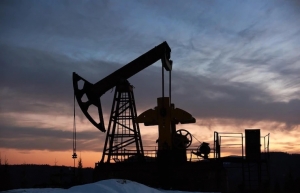 | OPEC+ to meet amid economic downturn fears Faced with recession fears, the OPEC+ countries are expected to agree a modest increase in oil production at a meeting on Monday, with some experts even forecasting a cut to support prices. |
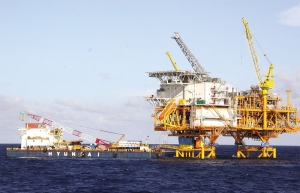 | Oil and gas sector counting on vital new investment cycle As oil prices anchor around $90-100 per barrel globally, changes in the oil and gas policy of many markets are expected to bring a new cycle of investment to Vietnam – with the government also taking steps to transition to renewable energy sources by cooperating with countries around the world. |
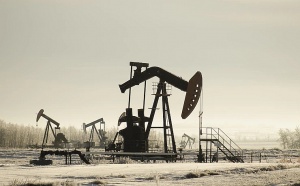 | OPEC+ agrees oil output cut to prop up prices The OPEC+ oil cartel agreed Monday to cut production for the first time in more than a year as it seeks to lift prices that have tumbled due to recession fears. |
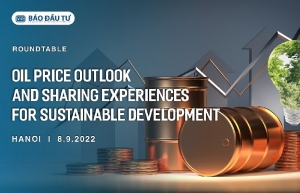 | Roundtable: Oil Price Outlook and Sharing Experiences for Sustainable Development On September 8, Vietnam Investment Review (VIR) will host a roundtable titled "Oil Price Outlook and Sharing Experiences for Sustainable Development" to discuss the impact of oil price fluctuations on Vietnam's economy and the various measures to maintain stable and sustainable growth. |
 | Insights into oil price volatility and strategies to cope with fluctuations Experts gathered at VIR's roundtable on the morning of September 8 to share their predictions about the upcoming global volatility in oil prices and solutions to mitigate these issues in Vietnam. |
What the stars mean:
★ Poor ★ ★ Promising ★★★ Good ★★★★ Very good ★★★★★ Exceptional
Related Contents
Latest News
More News
- Human-centred governance seen as key to AI development (December 19, 2025 | 18:19)
- Top 10 notable events of Vietnam’s industry and trade sector in 2025 (December 19, 2025 | 14:00)
- Tungsten surges to 12-year high as world enters a new 'black gold' race (December 18, 2025 | 17:27)
- Vietnam’s coffee exports set new record despite price pressures (December 18, 2025 | 17:13)
- Garment and textile sector seeks new growth after volatile year (December 18, 2025 | 17:01)
- VinSpeed and Siemens strengthen cooperation for high-speed rail development (December 18, 2025 | 16:53)
- High-tech adoption for TH true MILK (December 18, 2025 | 13:39)
- Takeda supports health resilience amid climate change challenges (December 18, 2025 | 12:39)
- Mondelez Kinh Do - a chapter of purpose-led leadership in Vietnam (December 18, 2025 | 09:44)
- VNPAY services receive the highest-level PCI DSS international security certificates for six consecutive years (December 17, 2025 | 23:47)


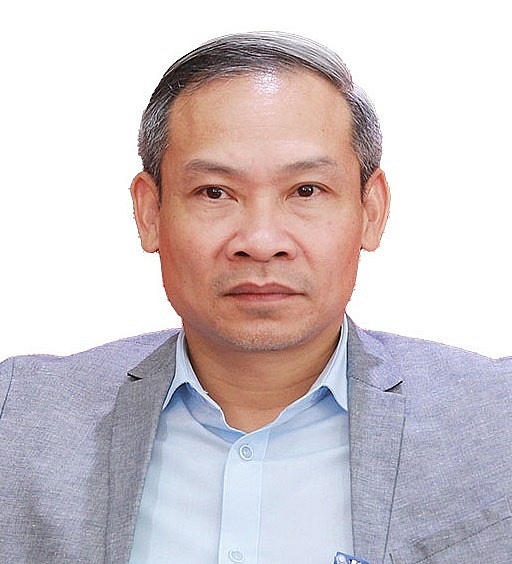
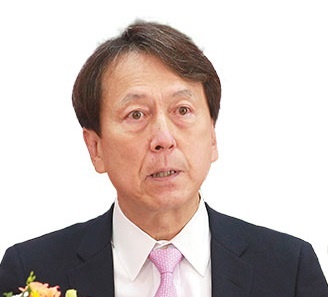

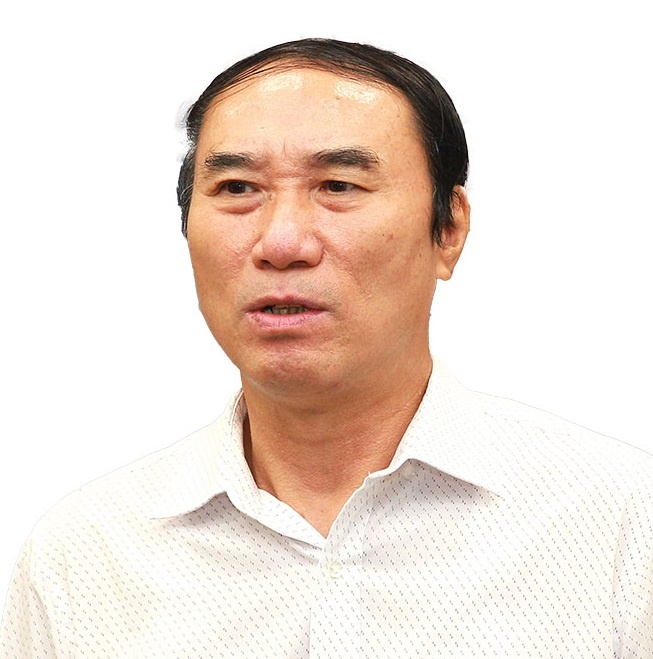



 Tag:
Tag:





















 Mobile Version
Mobile Version